Centrale Montemartini is a former thermoelectric power plant that was transformed into a museum of ancient Roman art. The huge machines are still there, and their hulking gray mass forms an interesting contrast with the ancient marble statues.
A Power Plant…
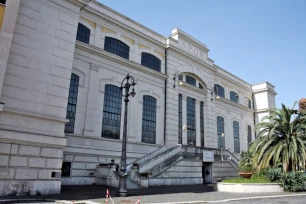
The Montemartini power plant was built in 1912 in Ostiense, an industrial neighborhood situated just south of Rome’s historic center. The building – the first public electricity plant in Rome – was designed in Art Nouveau style and named after the Italian economist Giovanni Montemartini. The machines inside the plant were regularly renewed and in 1942 a massive 20,000 kW alternator was installed to supply EUR – the site of a planned world exposition – with power. The plant miraculously survived World War II unscathed, and it continued to be in use until the mid 1960s, when it was abandoned.
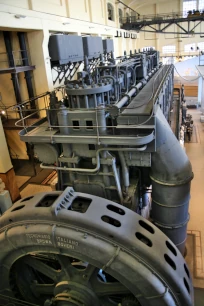
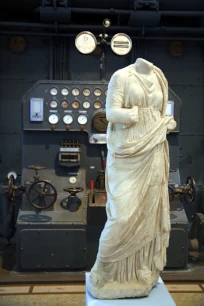
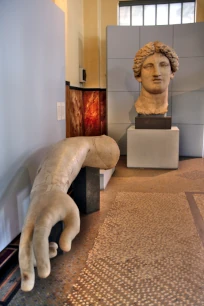
Unlike many other old industrial buildings, the Montemartini plant was spared from demolition due to its historical and architectural importance. At the end of the 1980s, ACEA, the local utility company that managed the plant, even launched plans to renovate the structure and transform it into a museum of energy and water. In 1990, the renovation of the Montemartini plant was indeed completed, but the plans for a new museum were shelved.
… becomes a Museum
In 1995, ACEA and Rome’s city council agreed to use the spacious rooms of the former electricity generating station to display a selection of art from the Capitoline Museums while the Capitoline complex was being renovated. The exhibition, entitled ‘The machines and the gods’ opened in 1997.
The interesting combination of industrial machines and classical sculpture proved very popular so when a part of the sculptures moved back to their home on the Capitoline Square in 2005 it was decided to create a permanent outpost of the museums here at the Centrale Montemartini, where you now find a selection of works from the Capitoline Museums‘ collection.
Museum Collection
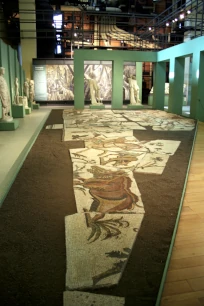
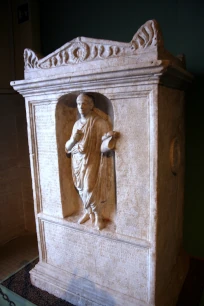
The Centrale Montemartini museum has a collection of about four hundred sculptures, reliefs and mosaics from a period between the fifth century BC and the fourth century AD.
It’s the intriguing juxtaposition of the massive turbines and engines with the marble sculptures that makes this museum so interesting. The huge rooms are also ideal for the display of large objects, such as the colossal head, arm and feet of an eight-meter-tall statue found in the Area Sacra de Largo Argentina. But there are also smaller items on display, such as a beautiful mosaic with a marine landscape that is so skillfully made that it looks as if it were painted.
The museum is divided into four areas. The atrium on the ground floor shows panels that illustrate the history of the Centrale Montemartini and Ostiense. The next room is the Hall of Columns, where you find beautiful mosaics, funerary objects and a row of busts from the Republican era.
The Hall of the Machines on the second floor is the largest and most impressive room. Here, classical statues vie for attention with the massive diesel engines, installed in 1933 in the presence of Mussolini himself. The machines provide a backdrop for a collection of faithful replicas of Greek statues. At the other end of the room are statues that were found in the 1930s at the Temple of Apollo Sosiano near the Theater of Marcellus.
The Boiler Room, named for the huge fifteen-meter-tall boiler, is home to a number of beautiful statues that once adorned luxurious imperial residences and a group of funerary monuments that were excavated in Ostiense. Among the highlights here are a large mosaic with a hunting scene, a sculpture group depicting a satyr fighting with giants and several high quality statues including one of Venus and another one showing the muse Polyhymnia.

